I have to transfer big files (500 MB+...can also be of 1GB in size). These files have to be base64 encoded and the encoded string has to be put in a XML file. While my below code works good for smaller files (30 - 50 MB) it fails for files great than 100 MB.
I am using base64 encoder from SUN (sun.misc.BASE64Encoder).
public void execute(InputStream inputstream, OutputStream outputstream) throws StreamTransformationException{
try
{
String sourceFileName = "test_file";
String ReceiverStr = "";
//2. Convert input data in Base64Encoded string
BASE64Encoder encoder = new BASE64Encoder();
byte input[] = new byte[inputstream.available()];
inputstream.read(input);
String base64Encoded = encoder.encode(input);
//3. Build the SOAP request format
String serverUrl = "http://website/url";
String soapEnvelope = "<soapenv:Envelope xmlns:soapenv=\"http://schemas.xmlsoap.org/soap/envelope/\" xmlns:soap=\"http://schemas.microsoft.com/sharepoint/soap/\">";
String soapHeader = "<soapenv:Header/><soapenv:Body><soap:CopyIntoItems><soap:SourceUrl>C:\\Users\\Desktop\\test_file.txt</soap:SourceUrl><soap:DestinationUrls><soap:string>" + serverUrl + "</soap:string></soap:DestinationUrls><soap:Fields><soap:FieldInformation " + "Type=" + "\"Text\"" + " DisplayName=\"" + sourceFileName + "\"" + " InternalName=\"" + sourceFileName + "\"" + " Id=\"deff4b5c-b727-414c-893d-c56a8e12455f\"" + " Value=\"" + sourceFileName + "\"/></soap:Fields>";
String soapStream = "<soap:Stream>" + base64Encoded + "</soap:Stream>";
ReceiverStr = soapEnvelope + soapHeader + soapStream + "</soap:CopyIntoItems></soapenv:Body></soapenv:Envelope>";
//4. Write the SOAP request to receiver channel
outputstream.write(ReceiverStr.getBytes());
}
catch(Exception e) {
throw new StreamTransformationException(e.toString());
}
}
When I try to see the message at run-time, then the entire message is not displayed and it is truncated in-between in the base64Encoded string. Below is the error that is seen in my system on executing the JAVA code.
Please note that my server settings can otherwise easily transfer 1GB+ files without any JAVA Heap size error or file truncation.
Can you please let me know how can I process big files using above logic?
Thanks,
Abhishek.
